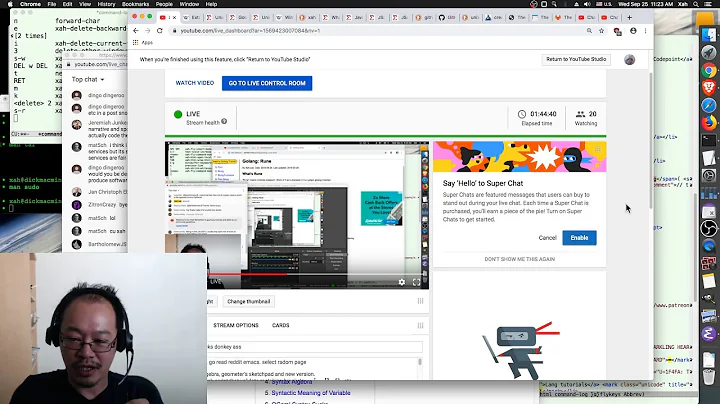Unicode utf-8/utf-16 encoding in Python
Solution 1
It's a unicode character that doesn't seem to be displayable in your terminals encoding. print tries to encode the unicode object in the encoding of your terminal and if this can't be done you get an exception.
On a terminal that can display utf-8 you get:
>>> print u'\u3053'
こ
Your terminal doesn't seem to be able to display utf-8, else at least the print a.encode("utf-8") line should produce the correct character.
Solution 2
You ask:
u'\u3053\n'
Is it utf-16?
The answer is no: it's unicode, not any specific encoding. utf-16 is an encoding.
To print a Unicode string effectively to your terminal, you need to find out what encoding that terminal is willing to accept and able to display. For example, the Terminal.app on my laptop is set to UTF-8 and with a rich font, so:

(source: aleax.it)
...the Hiragana letter displays correctly. On a Linux workstation I have a terminal program that keeps resetting to Latin-1 so it would mangle things somewhat like yours -- I can set it to utf-8, but it doesn't have huge number of glyphs in the font, so it would display somewhat-useless placeholder glyphs instead.
Solution 3
Character U+3053 "HIRAGANA LETTER KO".
The \xff\xfe bit at the start of the UTF-16 binary format is the encoded byte order mark (U+FEFF), then "S0" is \x5e\x30, then there's the \n from the original string. (Each of the characters has its bytes "reversed" as it's using little endian UTF-16 encoding.)
The UTF-8 form represents the same Hiragana character in three bytes, with the bit pattern as documented here.
Now, as for whether you should really have it in your data set... where is this data coming from? Is it reasonable for it to have Hiragana characters in it?
Solution 4
Here's the Unicode HowTo Doc for Python 2.6.2:
http://docs.python.org/howto/unicode.html
Also see the links in the Reference section of that document for other explanations, including one by Joel Spolsky.
Related videos on Youtube
8steve8
Updated on April 05, 2020Comments
-
8steve8 about 4 years
In python:
u'\u3053\n'Is it utf-16?
I'm not really aware of all the unicode/encoding stuff, but this type of thing is coming up in my dataset, like if I have
a=u'\u3053\n'.printgives an exception and decoding gives an exception.a.encode("utf-16") > '\xff\xfeS0\n\x00' a.encode("utf-8") > '\xe3\x81\x93\n' print a.encode("utf-8") > πüô print a.encode("utf-16") > ■S0What's going on here?
-
8steve8 almost 15 years
-
-
8steve8 over 14 yearsthanks yes, powershell , even powershell ISE doesn't seem "compatable" (for lack of a better understanding) with unicode in python. stackoverflow.com/questions/2105022/…
-
 Cyriac Antony over 4 yearsIs it possible to print utf-16 characters in python?
Cyriac Antony over 4 yearsIs it possible to print utf-16 characters in python?






